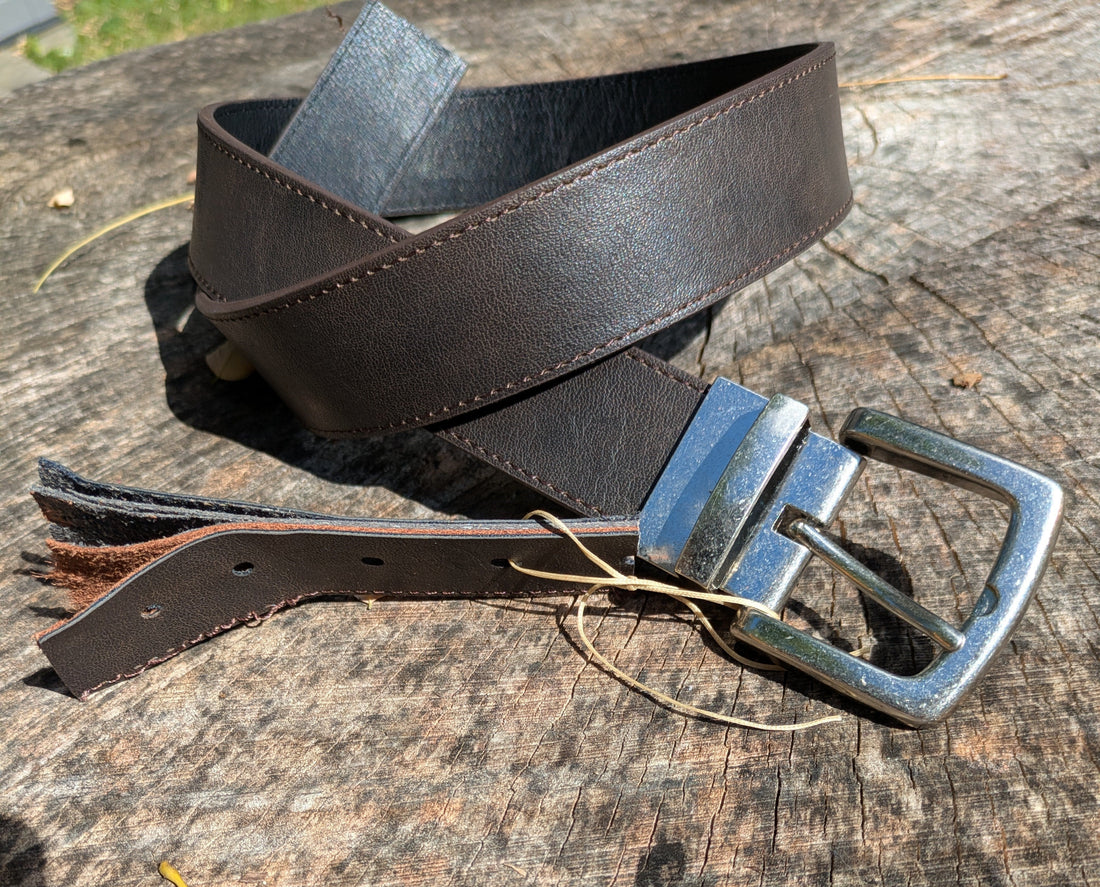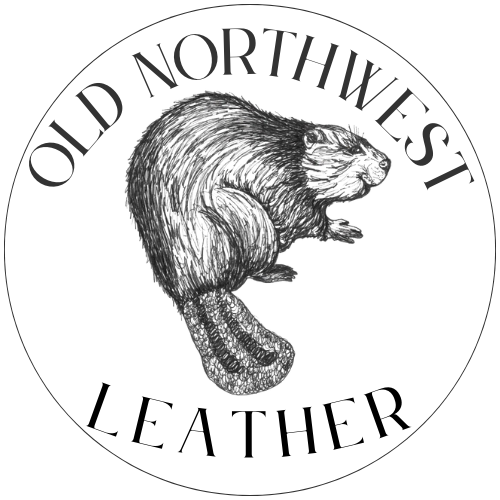
The Quality of a Belt
Share
"They don't make em' like they used to," goes the old adage. It rings true with most products and belts are no exception. Unless, of course, you know where to look. If you live a mostly sedentary lifestyle, a department store belt may do fine for awhile; it may even last a full year. For many, belts just don't last. You end up with belts that crack and break at the adjustment hole you use the most and after only a few months of good use. I spoke to a farmer who said the last belt he used only lasted three weeks! Talk about cheap.
When you stand at the department store and look at the line of belts, you are often disappointed at the lack of selection of durable and rugged belts. Even the ones that claim to be just that only last a few weeks longer than their non-rugged counterpart. You begin to wonder to yourself, "Where in the world did Grandpa even get his belt?" or "Do they even make them like that anymore?"
The answer is YES! Here at Old Northwest Leather I make them so your grandpa would be proud to wear it. The difference between these leather belts and a regular department store belt is quite surprising when you start to dig down and look at the construction. A quality belt of course is not always easy to identify. Many belt companies that sell to department stores have good-looking belts, but the core of the belt is weak, designed to be cheap.

A department store belt, or most department store belts, will advertise "genuine leather" belts. The problem with this advertisement is that it is very misleading. It is true that a "genuine leather" belt has leather components to it (which is what makes it genuine leather) but it is hardly the full story. If you were to take a belt you bought from a department store and cut it in half, you would be surprised to see that the inside of the belt is not actually leather. The inside is a filler that they advertise as "reinforced leather" but is no more than something comparable to cardboard. The cardboard - or filler - is placed between two very thin pieces of what is called a "top grain" leather, which is what makes the belt look nice. While these belts do look great, they provide no actual strength.

The belt I have in the above photo was advertised as a rugged belt. They use two top grain pieces of leather and use a filler similar to cardboard on the inside. What gives it the "ruggedness" is the extra layer of "split-grain" leather they add as another filler. Split-grain leather is a low quality leather where the grain is very loose and does not provide much strength.
So what makes Old Northwest Leather belts so different? My belts are made from one solid piece of full-grain leather. Meaning they are made from a single piece of leather that has had no alterations to it after the tanning process. At its most basic level, a full-grain piece of leather is the highest quality piece of leather you can get. There is some nuance to this, of course, but this is a general rule of thumb.
At this point you may be very confused and may even be distrusting of the leather industry and any belt maker. (I don't blame you. You don't want to spend $80 on a belt and not know if it will fall apart in the same way your $20 belt did.) In simple terms, a single piece of full-grain leather is what any client should look for in a quality belt. This will ensure you get a strong and good looking belt. Of course, if you have suspicions, the price point may give away what you are buying, and if it seems to good to be true then it is okay to ask questions. If you have questions about my belts, feel free to contact me using the contact page on the website.

View Old Northwest Leather Belts.
